This website has been archived from TrainWeb.org/gyra to TrainWeb.US/gyra.
This website has been archived from TrainWeb.org/gyra to TrainWeb.US/gyra.
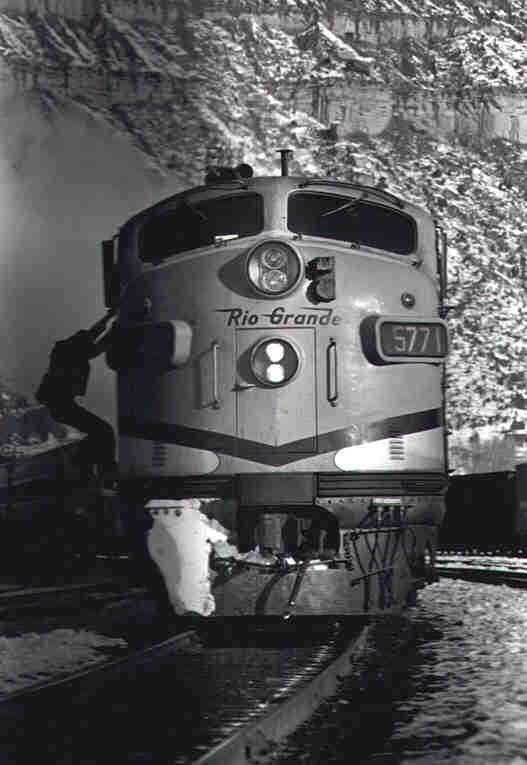
D&RGW No. 5771 F9A with Mars SBWR-5000 Light (in upper headlight opening)
leading train No.18
(eastbound Rio Grande Zephyr) in Helper, Utah in the late 70s
photo by: Mel Patrick

"crop" of above photo showing SBWR-5000
The SBWR-5000 Mars Light has many similarities to the SB-WR-200 model. The Gearbox is identical as well as many of the parts. The Gearbox-Motor combination are located at the Bottom of the mechanism in the SBWR-5000. In order to adhere to design, the boss to which the outer oval gimbal is driven, is located at mid-span on the outer oval gimbal. The lower bulb inner gimbal is driven at the top. This gimbal, as well as the top gimbal are identical to the SB-WR-200 gimbals. The resistors in the Mars lights installed in the "covered wagons" had the line dropping resistors located inside the case. The bearings and gearbox were located near the bottom and the resistors at the top, most likely to prolong the maintenance intervals for bearing lubrication (heat from resistors rises so keep lubricated items as low as possible).
The following photos by:
Andy Dahm - Colorado Railroad Museum
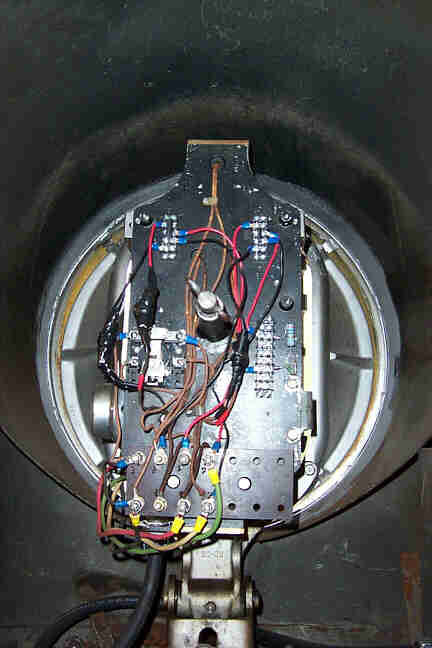
Back view of mechanism
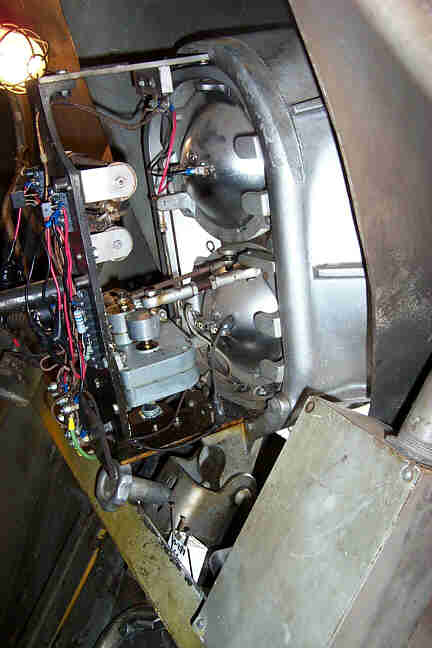
Right-side view of mechanism showing Gearbox linkage to mid-span boss on outer
oval ring gimbal as well as linkage to the top of the lower bulb gimbal ring
The linkages both are on the same side of the Gearbox.
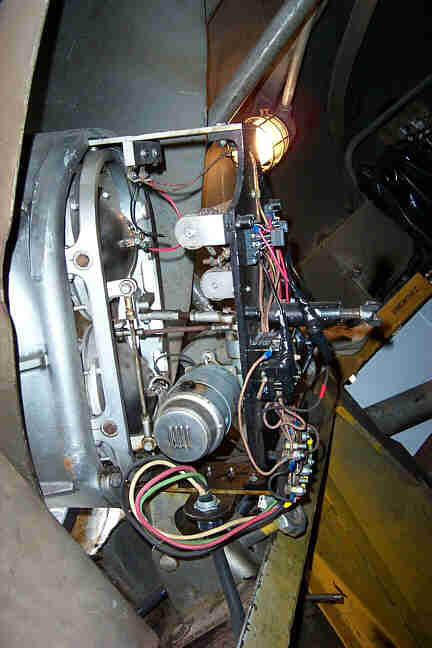
Left-side view of mechanism showing protruding 64-volt motor as well as well as the
linkage rod that connects the lower inner ring gimbal to the upper inner ring
gimbal so as to accomplish vertical motion of both bulbs in unison
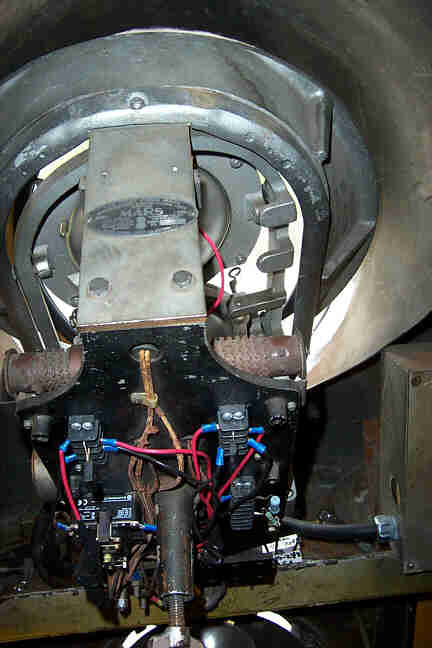
Top view of mechanism showing the Mars tag:
"SBWR-5000 S/N 1758"
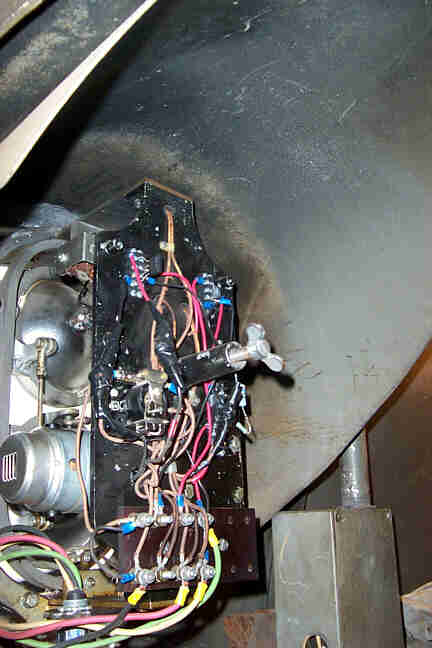
Left-side view of mechanism showing protruding motor and wing nut used to
secure the cover to the back of light
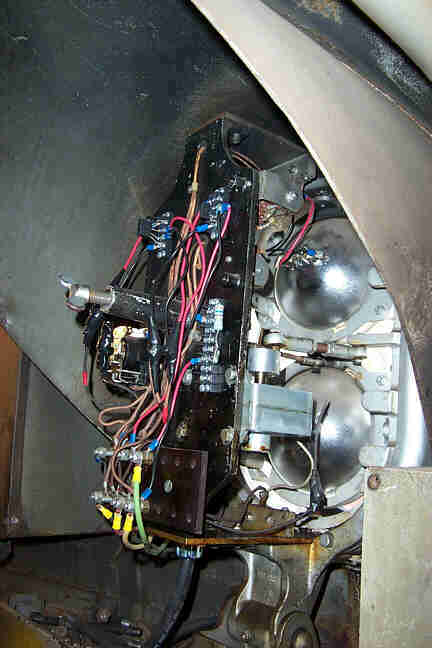
Right-side view of mechanism
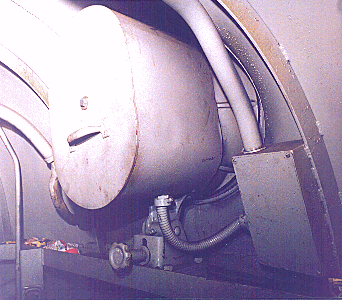
Back Cover of the light shown on Wabash No. 1189 F7 at the
Monticello Railway Museum
photo furnished by Paul Nelson
This conforms the cover used on the 5771 light mechanism (above)
- by description given by Colorado Museum personnel.